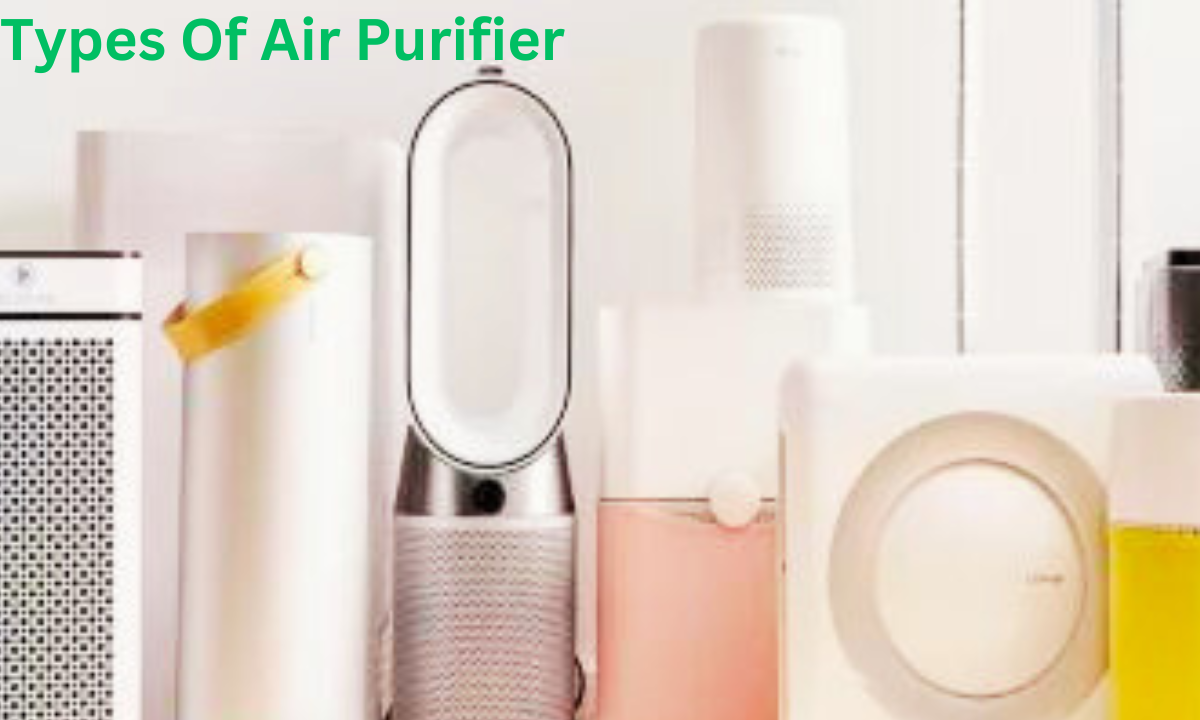How does an air Purifier work?
How an air purifier operates will be covered in this topic. We need to first explain an air purifier.How it works? A fan or blower to circulate air, a filter system to either capture or neutralize particles and pollutants, and in certain models, extra features like timers and air quality sensors, are the main parts of an air purifier.[How does an air Purifier work?]
Air purifiers work to remove indoor air pollutants from the air. They can be manufactured as small, stand-alone units or larger furnace air purifiers that can be attached to your HVAC.
What is Air Purifier?
A device known as an air purifier is made to eliminate airborne pollutants like smoke, dust, pollen, pet dander, and other particles.
They are frequently used to lower the concentration of pollutants and allergens and enhance indoor air quality.
This is a brief explanation of how they work.
These substances could aggravate asthma or allergy symptoms. Additionally, they might be a factor in more severe lung diseases and even some types of cancer.[[How does an air Purifier work?]
Air purifiers work to remove indoor air pollutants from the air. They can be manufactured as small, stand-alone units or larger furnace air purifiers that can be attached to your HVAC
- Air Intake: Using a fan or blower, the air purifier draws air in from your interior space.
- Pre-filtration: To catch larger particles like dust and hair, many air purifiers include a pre-filter. This filter increases overall efficiency and helps the primary filter last longer.
- Main Filter: The primary filter is the brains behind an air purifier. While there are many kinds of filters, the following are the most widely used ones:
- High-Efficiency Particulate Air (HEPA) Filter: HEPA filters are capable of capturing dust and most common allergens that are as small as 0.3 microns.
- Filter with activated carbon: This filter works well at drawing in smells, gases, and volatile organic compounds (VOCs). It works particularly well to get rid of smoke and offensive smells.
- UV-C Light: To eliminate or render inactive airborne microorganisms like bacteria and viruses, certain air purifiers employ ultraviolet (UV) light.
- Ionic or electrostatic filters: These filters draw in and hold onto airborne particles using charged particles. But as a byproduct, they can create ozone, which some users might find concerning.
- Air Purification: Depending on the type of filter being used, pollutants and particulates in the air are either neutralized or captured as the air flows through the main filter(s).
- Clean Air Release: The air is released back into the space after it has been filtered or purified, enhancing the quality of the air in general.
- Continuous Operation: Depending on your preferences, air purifiers can be set to run continuously or sporadically. Additionally, some models have sensors that measure the quality of the air and modify the model’s operation.
It’s crucial to select an air purifier based on your unique requirements and the kinds of pollutants you wish to get rid of in the air. When choosing an air purifier, take into account elements like the room’s size, the kind of filter(s) being used, and any extra features like timers or air quality sensors. To guarantee the device’s continued efficacy, routine maintenance is also required, including cleaning and filter replacement.
Types of Air Purifier
Commonly there are 7 Types of Air Purifier available in market. Let we learn about these Purifier and know How does an air Purifier work?
- Ultraviolet Air Purifiers
UV air purifiers work by using ultraviolet light to eradicate bacteria, viruses, and other potentially dangerous organisms from your house. Hospitals that use special ultraviolet light bulbs to disinfect patient rooms and laboratories served as the model for UV air purifiers. Small, portable devices called residential UV air purifiers use a UV light-filled chamber to filter the air in your house. Pathogens are destroyed by UV light because it breaks the molecular bonds in their DNA.
Depending on the model you choose, ultraviolet air purifiers can cost as little as Rs: 4000 or as much as Rs 60000.
The Ideal Moment to Purchase a UV Air Purifier
UV air purifiers eliminate 99.9% of mold spores that enter through your furnace or air conditioner, helping you to prevent illness by killing germs, mold, and other bacteria.
- HEPA Air Purifiers
With the use of a sophisticated air filter, HEPA air purifiers can eliminate 99.7% of all airborne particles bigger than 0.2 microns from the air in your house.
This indicates that dust, mold, dander, and pollen are among the many airborne particles that HEPA air purifiers are very good at eliminating. The price of a HEPA air purifier can range from RS 2500 to Rs 25000, depending on the model you choose.
Because they effectively eliminate the great majority of irritating particles and pollutants from the air, HEPA air filters are a consumer favorite.
- Activated Carbon Air Purifiers
The air inside your house can be effectively cleaned of smoke, smells, gases, and fumes with activated carbon air purifiers.
An activated carbon air purifier is something that people who are sensitive to smells like smoke or natural gas should think about. The majority of activated carbon air purifiers also have HEPA filters, which eliminate airborne particles. Air purifiers with activated carbon cost Rs 8000 and more.
An activated carbon air purifier is the only kind made specifically to get rid of smells and odors from your home. It is capable of removing chemicals, vapors, smokes, and gasses from the air.
- Electronic Air Cleaners
A whole-house solution, an electronic air cleaner uses static electricity in conjunction with your furnace or air conditioner to charge and trap airborne particles. With the use of positively charged ions and HEPA filters, electronic air cleaners can eliminate up to 99.98% of allergens from the air in your house.
Using a HEPA filter in conjunction with your heating and cooling systems, they purify the air throughout your entire house. To put it simply, an electronic air cleaner makes sure that the air that travels through your HVAC systems also passes through a HEPA filter, which has the ability to capture particles as small as.3 microns. The electronic air cleaner then uses positively charged ions to zap any leftover contaminants.
An electronic air cleaner works wonders to get rid of dust, dander, allergens, smoke, viruses, bacteria, and fumes from your house.
- Central Air Cleaners
Central air purifiers work in tandem with your central heating and cooling systems to clean the air throughout your entire house. Up to 99% of the most common allergens, 98% of dust, and 94% of viruses can be removed from your home by using silent central air cleaners that operate in your ductwork.
The negative health effects of viruses, asthma, and allergies can be significantly mitigated by central air cleaners. By removing particles that could otherwise cause interference with the equipment, they also contribute to the longevity of your heater and air conditioning unit.
- Air-To-Air Exchangers
In order to effectively ventilate your home, air-to-air exchangers remove stale, old air and replace it with clean, fresh air. Using “energy recovery ventilators,” air-to-air exchangers can also assist you in controlling the humidity and temperature in your house.
An air-to-air exchanger, for example, will retain heat in the air during the winter and then release it outside of your house.
An air-to-air exchanger will bring in fresh air from the outside if your house has poor circulation or stale air. This lessens the amount of mold in the air and helps control the temperature in your house.
- Ionic Air Purifiers
Ionic air purifiers run silently because they don’t have a motor. They release negative ions into the atmosphere, which combine with dust and other positively charged airborne particles to make them so heavy that they finally fall out of the atmosphere.
Positively charged particles are captured by electrostatic precipitators found in some ionic air purifiers and transferred to a metal plate inside the device.
There is one kind of ionic air purifier that is causing waves in the air treatment industry, despite the fact that the majority of ionic air purifiers are bulky, independent appliances that must be placed throughout your house.[How does an air Purifier work?]
Aside from smells, ionic air purifiers are capable of eliminating almost anything from the air. This covers allergens, smoke, dust, dander, bacteria, viruses, and fumes. The new iWave-R can clean itself, but some models do require routine cleaning to preserve functionality and completely remove air pollutants. Hopefully now we all know types of air purifier and How does an air purifier works?
https://www.goodhousekeeping.com/appliances/air-purifier-reviews/a25252001/do-air-purifiers-work/
Pure and Basic
Purifiers and air cleaners are the best options if you want to improve the quality of the air in your home. These devices, which are more advanced than basic air filters, put a lot of effort into removing possible irritants and pollutants from the air in your house.
You should therefore anticipate an improvement in your symptoms of asthma and allergies. The fact that dangerous particles won’t be waiting for you at home gives you another reason to breathe a little easier.[[How does an air Purifier work?]
Famous Brands for Air Purifiers are:
- MI Xiaomi Smart Air Purifier
- Philips Air Purifier
- Dyson Purifier Cool Formaldehyde Air Purifier
- Coway Professional Air Purifier for Home
- Amazon:Travel-Friendly, Household, and Office Portable Air Purifier
- Honeywell Air Indoor Air Purifier
In Present scenario we have to depend on latest technology to survive. Hopefully the above information will work for many . Currently Delhi AQI level is above 500 which is hazardous to get more info about Delhi air pollution situations read :
https://daybydaynews.com/delhi-most-polluted-city-in-the-world-2023/




Very informative blog.
We also bought one purifier
Useful content